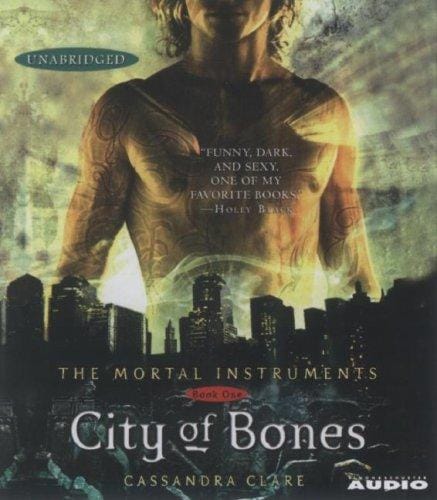City of Bones (Mortal Instruments) — An 800-Word Review & Guide
Dive into City of Bones, the gateway to Cassandra Clare’s Mortal Instruments series, with a spoiler-light look at its plot, themes, and pop-culture legacy.

Introduction: Enter the Shadowhunter World
When Cassandra Clare’s “City of Bones” hit shelves in 2007, it carved out a permanent runic mark on the young-adult urban-fantasy landscape. Serving as the gateway to the six-book Mortal Instruments saga, the novel blends demon hunting, teenage angst, and a hidden New York City underworld in ways that still feel fresh over a decade later. Whether you are a first-time reader or a long-time fan revisiting the series, this article offers a spoiler-light review, exploring the novel’s plot, themes, characters, and wider cultural impact.
Plot Overview: A Spoiler-Light Glimpse
“City of Bones” follows fifteen-year-old Clary Fray, whose ordinary Brooklyn life unravels when she witnesses a murder that no one else can see. The attackers reveal themselves as Shadowhunters—warriors with angelic blood sworn to protect humanity from demons. When Clary’s mother disappears and demonic forces begin stalking her, Clary allies with rebellious Shadowhunter Jace Wayland and siblings Alec and Isabelle Lightwood. What begins as a rescue mission quickly expands into a hunt for the Mortal Cup, a legendary artifact capable of creating or destroying Shadowhunters. Along the way, Clary uncovers secrets about her own heritage that redefine her identity and the rules of her world.
Themes and Motifs
At its core, “City of Bones” interrogates the meaning of family—both the one you are born into and the one you choose. Blood ties are questioned as characters grapple with hidden parentage, adoption, and betrayal. Identity likewise plays a central role; Clary’s journey from mundane teenager to potential Shadowhunter mirrors the adolescent search for self. Clare also tackles prejudice, using the tension between Shadowhunters, Downworlders (vampires, werewolves, warlocks, and faeries), and mundanes as a metaphor for real-world discrimination. Finally, the lure of power features prominently, embodied in antagonist Valentine Morgenstern and the Mortal Cup itself, pushing characters to weigh ambition against morality.
Character Spotlight: Heroes, Antiheroes, and Everyone In Between
Cassandra Clare’s cast is both vast and memorable, but it is the flawed humanity of each figure that keeps readers invested. Clary’s artistic eye allows her to perceive the world differently, turning creativity into a superpower. Jace Wayland, snarky and battle-hardened, balances heroism with vulnerability born from childhood trauma. Simon Lewis offers comic relief and a grounding human perspective, while Isabelle Lightwood flips the “tough girl” trope by wielding a golden whip and unapologetic confidence. Even side characters like Magnus Bane—the charismatic High Warlock of Brooklyn—shimmer with charisma. This dynamic ensemble fuels the novel’s fast pace and emotional stakes.
World-Building and Setting
“City of Bones” transforms familiar New York City landmarks into mystical hotspots. Pandemonium, the Manhattan nightclub where Clary first glimpses Shadowhunters, pulses with hidden glamour. The Institute, a gothic cathedral camouflaged from mortal eyes, serves as a training ground and sanctuary. By layering runes, glamours, and a complex magical taxonomy onto recognizable streets, Clare makes readers feel like the supernatural might lurk just beyond any street corner. Detailed lore—such as angelic runes that grant temporary powers, or the Accords that govern relations between Shadowhunters and Downworlders—adds depth without drowning the narrative in exposition.
Reception and Cultural Impact
Upon release, “City of Bones” debuted at number eight on The New York Times Best Seller list and has since sold millions of copies worldwide. Critics praised its witty dialogue and cinematic action sequences, while readers latched onto its inclusive cast and slow-burn romances. The book helped ignite the late-2000s boom in urban fantasy and paved the way for more diverse, trope-savvy YA series. Fan communities continue to thrive on platforms like Tumblr, TikTok, and Archive of Our Own, generating art, fiction, and lively discourse that keep the novel relevant.
Adaptations: From Page to Screen
The story’s popularity naturally led to adaptations. The 2013 film “The Mortal Instruments: City of Bones,” starring Lily Collins and Jamie Campbell Bower, condensed the novel’s events into a two-hour blockbuster. Although box-office returns were modest, the property gained a second life with Freeform’s television series “Shadowhunters” (2016-2019). The show expanded character arcs, introduced new storylines, and attracted a global fandom that praised its LGBTQ+ representation. While neither adaptation is wholly faithful, both capture the core spirit of Clare’s world and have drawn new readers to the books.
Why You Should Read “City of Bones” Today
Even in a market crowded with supernatural sagas, “City of Bones” stands out for its razor-sharp wit, emotionally resonant characters, and intricately woven lore. The novel’s brisk pacing makes its 500 pages fly by, while its cliff-hanger ending ensures you will reach for the next installment. For readers seeking representation, the series offers strong female leads, queer romance, and complex characters of color. If you crave a fusion of gritty urban realism and mythic grandeur, “City of Bones” is a portal you will want to step through—runes optional.
Final Thoughts
“City of Bones” remains a cornerstone of modern YA fantasy, setting a high bar for world-building and character development. Its enduring influence, bolstered by multimedia adaptations and an active fan base, proves that stories of hidden magic and chosen families continue to resonate. Whether you are exploring the Shadow World for the first time or returning for a reread, Cassandra Clare’s debut invites you to question what you think you know about good, evil, and everything in between.



